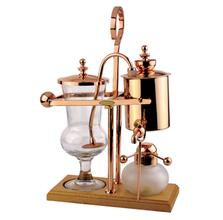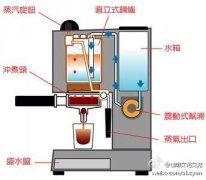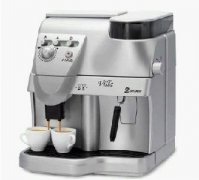Introduction to the manufacture and use of coffee pots in Belgium

European celebrities in the 1850s demanded not only the best cooking skills, but also exquisite handicrafts. Belgian craftsmen glorified this historical tradition and recorded it in detail, which has been handed down to this day.
Therefore, this patented royal siphon coffee pot not only has the perfect coffee-making process, but also is a work of art in itself.
The appearance of the Belgian royal coffee pot is only half of its history, and the siphon itself is worth exploring. It combines several natural forces: fire, steam, pressure, gravity, which make the operation of the Belgian royal coffee pot more visible. When the coffee dances with the Belgian pot, it is the brightest part of the night. The whole process of making coffee is worth watching again and again. It's amazing. Drinking coffee is a rational and emotional game. If you want to drink coffee at home, you have to know the Belgian coffee pot. This cooking process is like a coffee maker for a stage play, because the dazzling and gorgeous appearance, coupled with the full fun of gimmick operation, greatly increases the score of coffee sensibility and romance. The Belgian coffee pot, also known as Balancing Syphon, was invented by British shipbuilder James Napier. It was already the royal coffee pot of Belgium as early as the 19th century. In order to show the royal style, Belgian craftsmen took great pains to create this elegant kettle, wrapped in gold and cast copper, to make the originally ordinary coffee pot dazzling and dignified, as if it had brought a breath of aristocracy.
The Belgian pot, which has the characteristics of both siphon coffee pot and mocha pot, is full of seesaw fun. From the outside, it looks like a symmetrical balance, with a kettle and alcohol lamp on the right and a glass coffee pot with coffee powder on the left. The ends are connected by a thin tube bent like a crutch.
When the kettle is full, the balance is out of balance and tilts to the right; when the water boils, the steam rushes open the piston in the tube, rushes down the tube to the glass pot, and meets the coffee powder waiting at the other end, which happens to be coffee's favorite 95 degrees Celsius. After all the water in the kettle turns into moisture and runs to the left and is fully mixed with the coffee powder, because of the siphon principle, the hot coffee will go back to the hometown on the right through the filter at the bottom of the thin tube, leaving the dregs at the bottom of the glass pot.
At this time, the coffee maker turned on the faucet connected to the kettle and a cup of perfect coffee came out of the oven.
Important Notice :
前街咖啡 FrontStreet Coffee has moved to new addredd:
FrontStreet Coffee Address: 315,Donghua East Road,GuangZhou
Tel:020 38364473
- Prev

Simple functional description of each part of the coffee machine
Boiler: currently widely popular coffee machine boiler materials are mainly copper and stainless steel, but some manufacturers will also use copper alloy and copper plating. The main characteristics of copper boilers are good extensibility (in frequent hot and cold water alternating, but also to maintain good elasticity), heat transfer speed is faster. In early distilleries it was widely used, such as distillation equipment for spirits. Figure 1.JPG (17.8
- Next

Italian Xike office series fully automatic coffee machine
Italian Xi Ke office series Vera automatic coffee machine "multi-function": one machine multi-purpose, noble and inexpensive, pure goods, special adjustment as you like
Related
- Beginners will see the "Coffee pull flower" guide!
- What is the difference between ice blog purified milk and ordinary milk coffee?
- Why is the Philippines the largest producer of crops in Liberia?
- For coffee extraction, should the fine powder be retained?
- How does extracted espresso fill pressed powder? How much strength does it take to press the powder?
- How to make jasmine cold extract coffee? Is the jasmine + latte good?
- Will this little toy really make the coffee taste better? How does Lily Drip affect coffee extraction?
- Will the action of slapping the filter cup also affect coffee extraction?
- What's the difference between powder-to-water ratio and powder-to-liquid ratio?
- What is the Ethiopian local species? What does it have to do with Heirloom native species?

